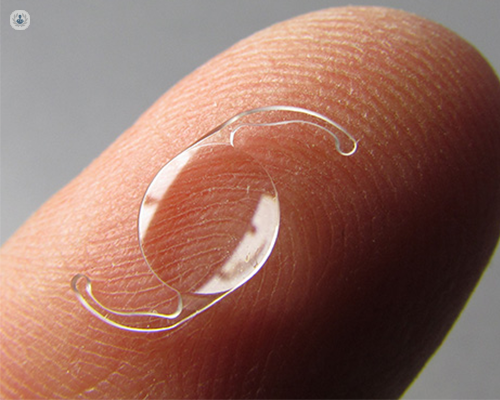How long do intraocular lenses last?
Escrito por:In one of our latest articles here, highly experienced and trained consultant ophthalmologist, Mr Geraint Williams, describes what intraocular lenses are, and tells us what role these lenses play when it comes to cataract surgery.

What are intraocular lenses? How do they form part of cataract surgery?
Intraocular lenses are plastic replacement lenses for the natural lens of the eye that we remove during cataract surgery. The natural intraocular lens is there to help focus light on the back of the eye.
As we get older, the lens becomes cloudy. Through a keyhole procedure, we remove the natural lens and replace it with a plastic lens.
Are there different types of intraocular lens? Which type is best?
Typically, the power in the lenses that we would use in what we call a monofocal lens is to help the patient focus for distance. Under some circumstances, we might choose to leave people a little more short-sighted to help them with reading activities if they were previously short-sighted.
With cataract surgery, we have the opportunity to choose from different types of lenses, such as toric lenses to help overcome astigmatism, extended depth lenses, or trifocal lenses, to help provide a greater range of vision. We would discuss your visual needs at the time of consultation and determine what the best and safest options may be for you.
How long do intraocular lenses last?
They are designed to be implanted and remain in the natural capsule that holds the natural lens of the eye. They are designed to stay in place and not move. They are there permanently to help the patient for the rest of their lives.
Can intraocular lenses become cloudy or move out of place
Extremely rarely lens implants can become cloudy and the lenses can move out of place, requiring additional surgery. In the vast majority of cases though, they do not move or become cloudy and are considered permanent.
What are the success rates of intraocular lens?
The success rates are extremely good and based on careful eye measurements taken and evaluation prior to operating. We know from our audit data that the majority of patients will get extremely close to our intended refractive target (approximately 70 per cent within 0.5 diopters), whether for distance or close up.
To book a consultation with Mr Geraint Williams, simply head on over to his Top Doctors profile today.


